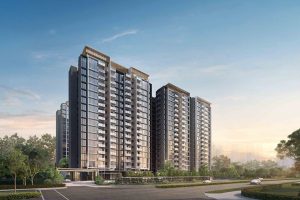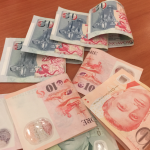Brisk residential activity follows economic recovery, coupled with low interest rates and availability of credit
The transition to Phase 2 of reopening in Singapore from 19 June supported an economic rebound in the third quarter of this year. The economy grew by 7.9% quarter-on-quarter (qoq) given the depressed level of economic activity during the Circuit Breaker period in the preceding quarter. On a year-on-year (yoy) basis, the economic contraction moderated from 13.3% to 7.0%.
The economic recovery, coupled with low interest rates and availability of credit, have catalysed interest in residential real estate leading to brisk residential activity, both from owner-occupiers and investors seeking to hedge against volatile equity markets and economic uncertainties.
Investment sales in brisk residential activity
Supported by increased activity in the residential and industrial markets, private investment sales made a strong showing in Q3 2020, growing by 33.8% qoq to nearly $2.5bn after three consecutive quarters of decline.
EDMUND TIE’s senior director of research and consulting, Mr Lam Chern Woon said: “Besides higher transaction activity, we are also seeing transactions of higher price quantums. In light of the Sino-US tensions and other geopolitical uncertainties, Singapore’s neutral stance, political stability and positive living environment – especially in the areas of security, education and medical care – have made property investments here particularly attractive.”
With a total of $778mn transacted, residential investment sales constituted the bulk (31.4%) of total investment sales in Q3 2020, recording a considerable increase from its 14.1% share in Q2 2020. The rebounding interest in the residential assets is corroborated by resilient property prices and increasing transaction volumes in the residential market as a whole.
Also turning in a strong performance was the industrial investment sales sector, which saw $397mn transacted in Q3 2020, more than double of the value transacted in the preceding quarter.
 Brisk residential activity following reopening of showflats
Brisk residential activity following reopening of showflats
Following the reopening of showflats and greater launch activity, new sales continued to increase for the fifth consecutive month in September 2020 to reach 1,329 units, the highest since July 2018 when 1,724 units were transacted.
Of the six new launches in Q3 2020, two projects in District 14 recorded take-up rates of above 60%, aided by their competitive pricing. The 50-unit freehold project NoMa saw 36 units sold, with a take-up rate of 72%, while Penrose reportedly sold 341 units over the launch weekend, out of a total of 566 units. As at end-3Q 2020, 389 units have been sold in Penrose.
In the resale market, transaction volume more than tripled from 951 units in Q2 2020 to 3,149 units in Q3 2020. This was attributed to home viewings being allowed once again, while Covid-related construction delays may also have led homebuyers to consider the resale market.
Brisk residential activity not seen in commercial space
The office climate was relatively subdued in Q3 2020 as the majority of the workforce continued to work from home as a default. Net absorption continued to contract by 374,000 sq ft, while the islandwide office occupancy rate contracted by 0.3% points to 92.5%. Rents softened across the board, though premium grade buildings in Shenton Way/Robinson Road/Tanjong Pagar showed more resilience given their high specifications and efficient floor plates.
Conditions remained challenging in the retail sector, especially in Orchard/Scotts Roads due to the dearth of tourist arrivals. However, malls in the Fringe/Suburban areas fared better given their proximity to residential catchments and first-storey rents saw limited declines.
In the industrial sector, demand was driven by the F&B, logistics and warehousing segments. Mr Lam said: “Regulatory constraints continue to limit the dine-in capacity at various outlets. F&B operators have adapted by offering more food delivery and takeout options. Some of the bigger restaurant chains took up industrial space to consolidate their operations or house a central kitchen. As a result, there had been significant leasing demand originating from central kitchens.”
There was also demand coming from logistics and warehousing on the back of robust demand coming from e-commerce services and stockpiling activities done by supermarkets.
Mr Lam said: “While the overall outlook for the industrial sector is expected to brighten gradually as global manufacturing recovers, this progression is expected to be uneven across different sectors. For instance, rising online and groceries sales will incentivise retailers to stockpile and expand their warehouse facilities to cater to the increasing demand.
“In additional to economic factors, demand for industrial properties is also largely dependent on location and efficiency of floor plates. Industrial developments that are located close to transportation nodes and have efficient floor plates will therefore enjoy greater advantage in attracting tenants. Landlords of older developments could make use of this soft climate to upgrade their facilities, so that they can meet with the demand when the market recovers,” he added.
The Urban Redevelopment Authority (URA) on 23rd October released the real estate statistics for 3rd Quarter 2020. Prices of private residential properties increased by 0.8% in 3rd Quarter 2020, compared with the 0.3% increase in the previous quarter.
Prices of landed properties increased by 3.7% in 3rd Quarter 2020, after remaining unchanged in the previous quarter. Prices of non-landed properties increased by 0.1% in 3rd Quarter 2020, compared with the 0.4% increase in the previous quarter.
Prices of non-landed properties in Core Central Region (CCR) decreased by 3.8% in 3rd Quarter 2020, compared with the 2.7% increase in the previous quarter. Prices of non-landed properties in Rest of Central Region (RCR) increased by 2.5%, compared with the 1.7% decrease in the previous quarter. Prices of non-landed properties in Outside Central Region (OCR) increased by 1.7%, compared with the 0.1% increase in the previous quarter.
Developers launched 3,791 uncompleted private residential units (excluding ECs) for sale in 3rd Quarter 2020, compared with 1,852 units in the previous quarter, Developers sold 3,517 private residential units (excluding ECs) in 3rd Quarter 2020, compared with the 1,713 units sold in the previous quarter.







